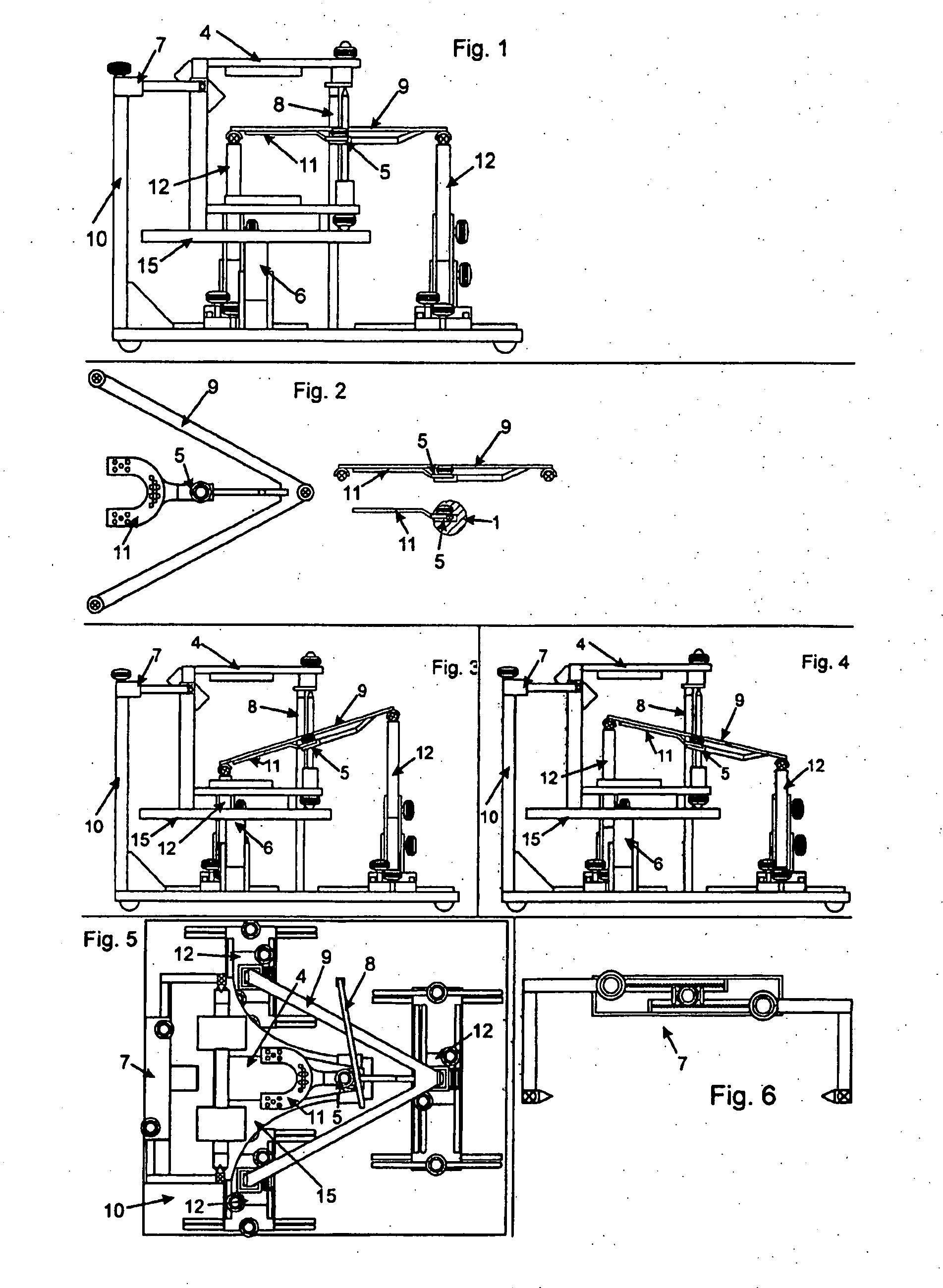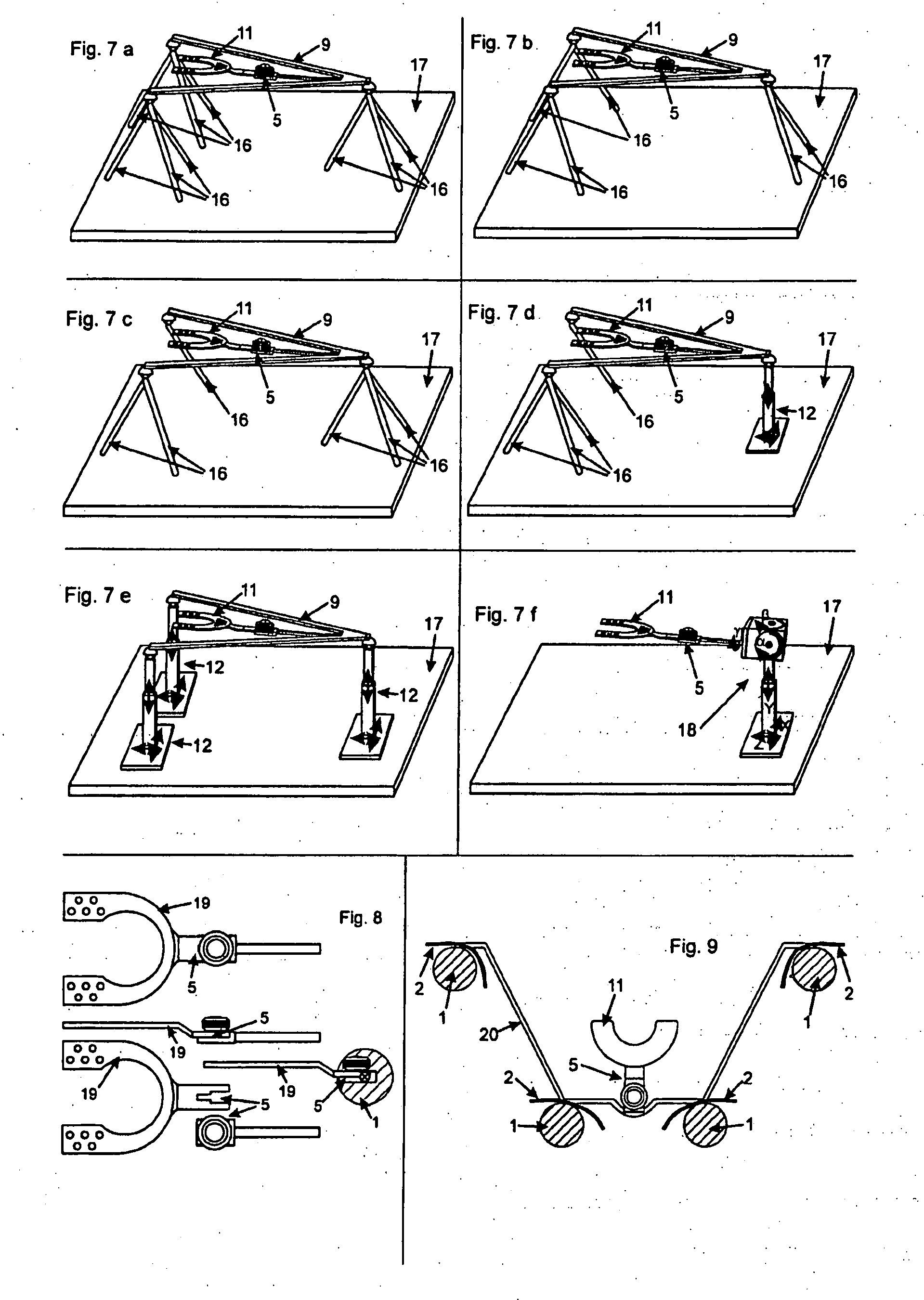Position-Determining and -Measuring System
a technology of positioning and measuring system, applied in image data processing, medical science, dentistry, etc., can solve the problems of high cost, high complexity and high cost of doing the job, and the use of position determination and positioning methods that are highly complex and expensiv
- Summary
- Abstract
- Description
- Claims
- Application Information
AI Technical Summary
Benefits of technology
Problems solved by technology
Method used
Image
Examples
first embodiment
[0047] The invention may be used in dental medical applications, e.g. for instrumental functional analyses in order to determine data, allowing on the one hand adjustment of articulators in the dental medical laboratory corresponding to the patient, and on the other user decisions concerning a diagnosis and possible therapy. The assembly of dental (partial) prostheses may also be significantly simplified.
[0048] In this application of the invention, the data needed for determining condylar locations and movements are determined through optical acquisition. The data are analyzed by the program according to the invention and enable the transfer of the results in the form of data to a dentistry laboratory. The jaw models are mounted in the articulator by preferably using an apparatus according to the invention for assembling jaw models in an articulator (here referred to as a mounting table) that is set to the values determined by the program.
[0049] In this dental-medicine application...
second embodiment
of the Invention
[0079] With the method according to the invention, the position of vehicles relative to a reference point may also be determined. For this purpose, at least one optical auxiliary structure may be fixed on vehicles. One or several cameras may be fixed in the vicinity, capturing at least one vehicle, or the auxiliary structure(s). The position and especially also the alignment of at least one camera are known and represent the reference position.
[0080] Thus, when recording and analyzing images according to the method described above, the position of the vehicle may be determined.
[0081] Alternatively, a reference position may also be provided by another distinct point and not the camera. For example, in the space or environment of the vehicle, at least one further optical auxiliary structure may be fixed and represent the known reference position. The camera position then doe not need to be known.
[0082] Alternatively, at least one camera may be fixed on a vehicle and...
PUM
 Login to View More
Login to View More Abstract
Description
Claims
Application Information
 Login to View More
Login to View More - R&D
- Intellectual Property
- Life Sciences
- Materials
- Tech Scout
- Unparalleled Data Quality
- Higher Quality Content
- 60% Fewer Hallucinations
Browse by: Latest US Patents, China's latest patents, Technical Efficacy Thesaurus, Application Domain, Technology Topic, Popular Technical Reports.
© 2025 PatSnap. All rights reserved.Legal|Privacy policy|Modern Slavery Act Transparency Statement|Sitemap|About US| Contact US: help@patsnap.com



